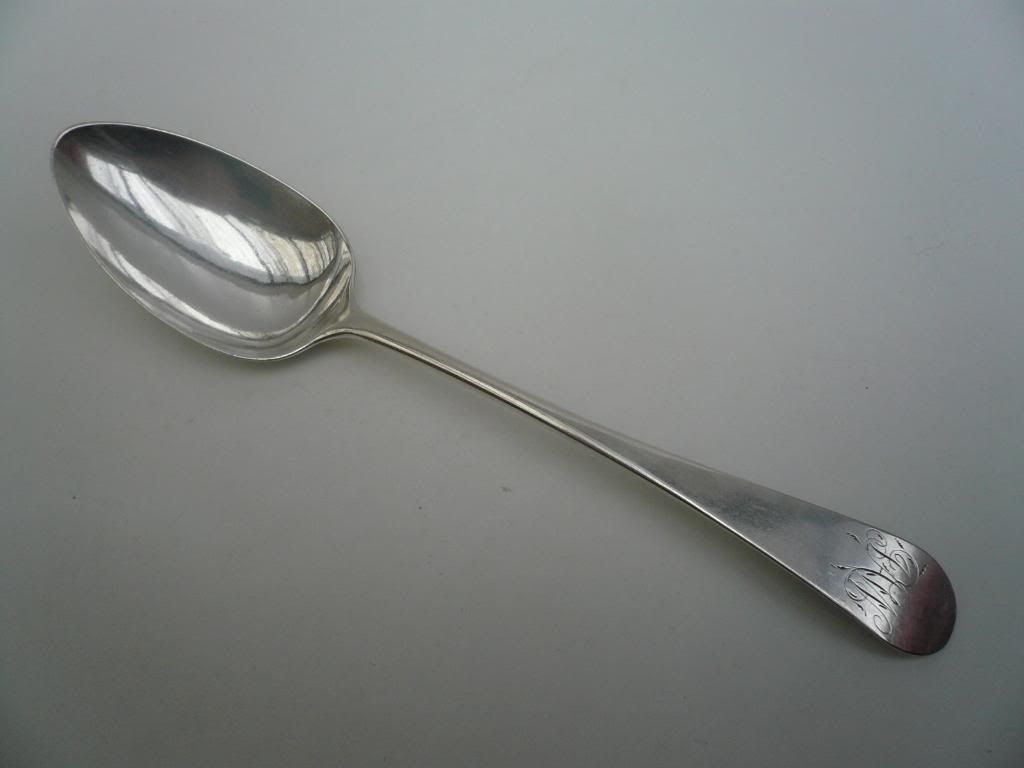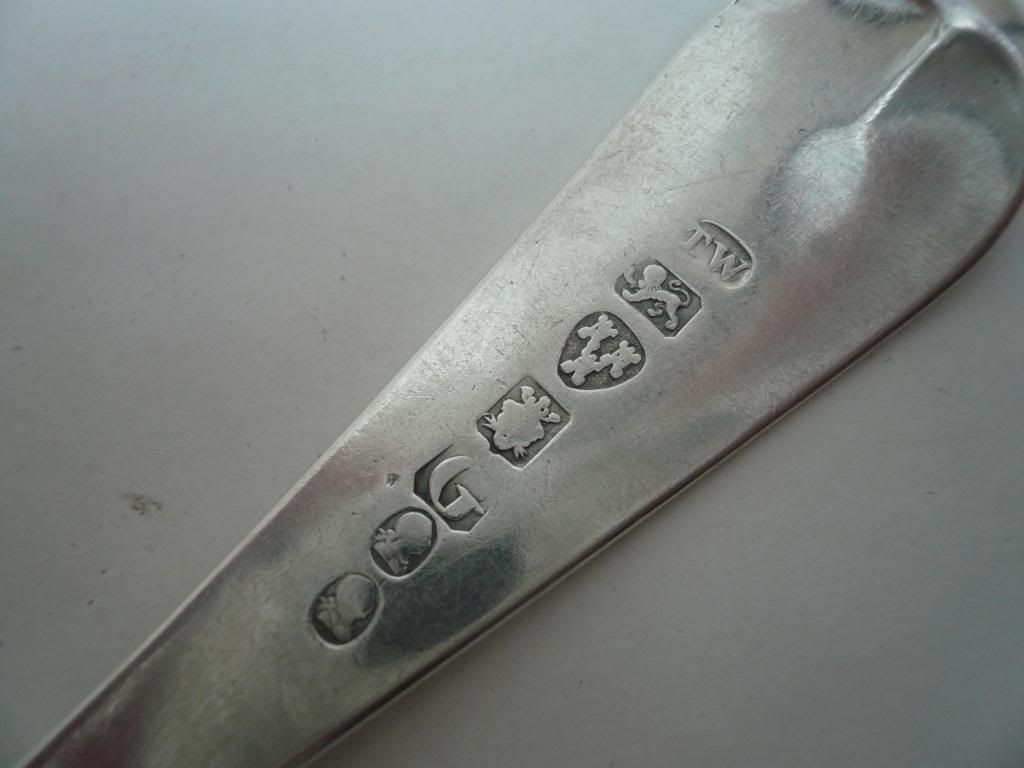On the 6th July 1797 the Duty on silver was doubled from 6d an ounce to 1s an ounce. This increase caused somewhat of a dilemma to the Assay Offices, for the striking of the Duty mark is effectively an official receipt that the correct amount of tax had been paid. It was imperative then that the Assay Office could discern from the Duty mark how much tax had been charged should they have to make a refund due to the item being exported.
When the new Date mark was employed the new rate would become obvious, but the intervening period called for identification.
The Duty mark punch is not a Hallmark as such, it was supplied by the Office for the Commissioner of Stamps not the Assay office who only struck the mark and collected the revenue, for this service they were paid 6d in every pound collected.
London filed two cusps into their Duty mark as they had over ten months to wait for a new Date mark (28th May 1798) but Exeter only had 31 days to wait until their Date mark changed (7th August 1797) and it is thought that they chipped the top right hand corner of the punch. Birmingham and Sheffield simply struck their Duty mark twice to show double Duty had been paid. These would all presumably have been temporary measures until the Stamp Office supplied new punches.
Of the other offices I do not know, until I came across this Newcastle assayed spoon made by John Langlands II which has the Duty mark struck twice.


Date wise it would fit well as Langlands was known to have dropped the pellet between his initials by c.1800. It could have of course have been an error by the marker.
I would be grateful for the opinions of other members as to whether they have knowledge of the system used at Newcastle or have seen similar markings to the ones on this spoon.
Trev.
.

